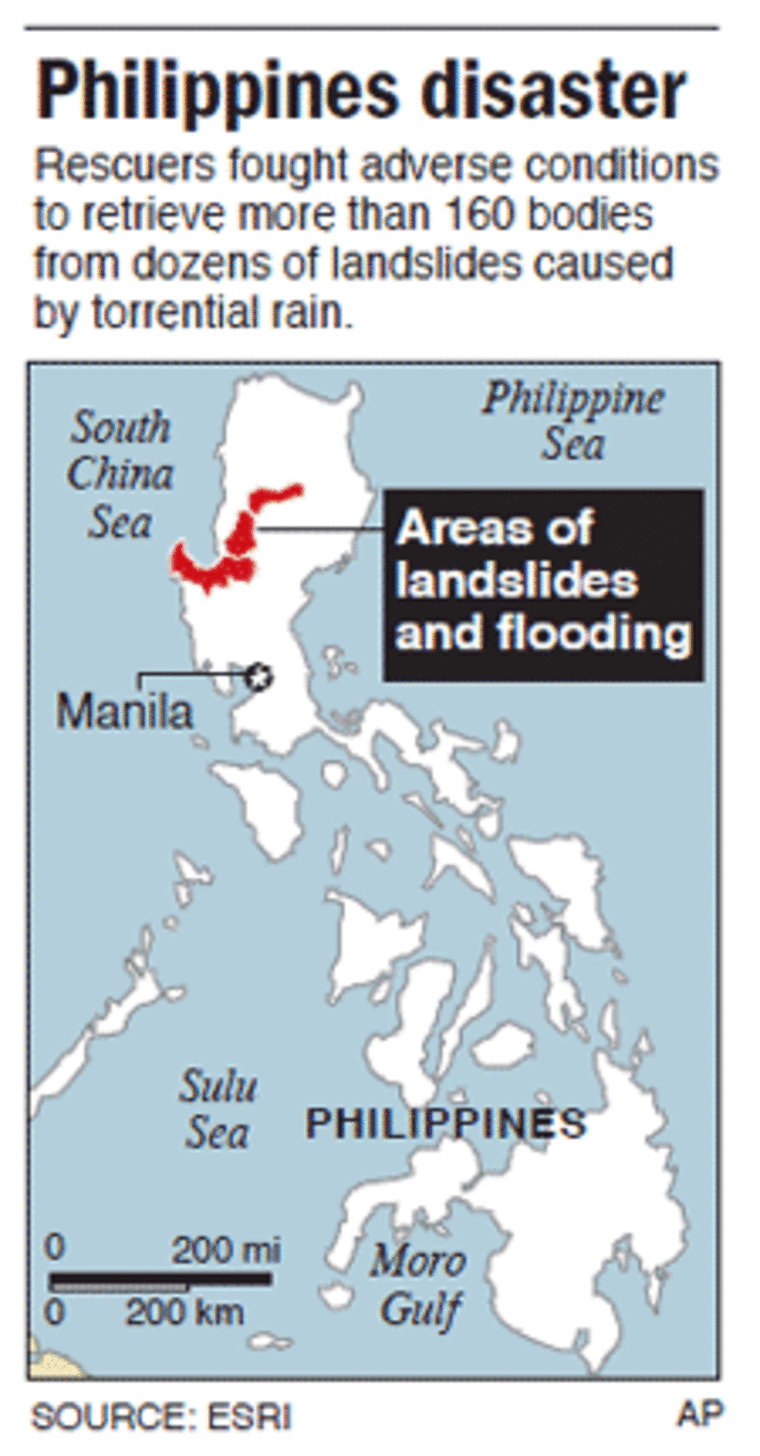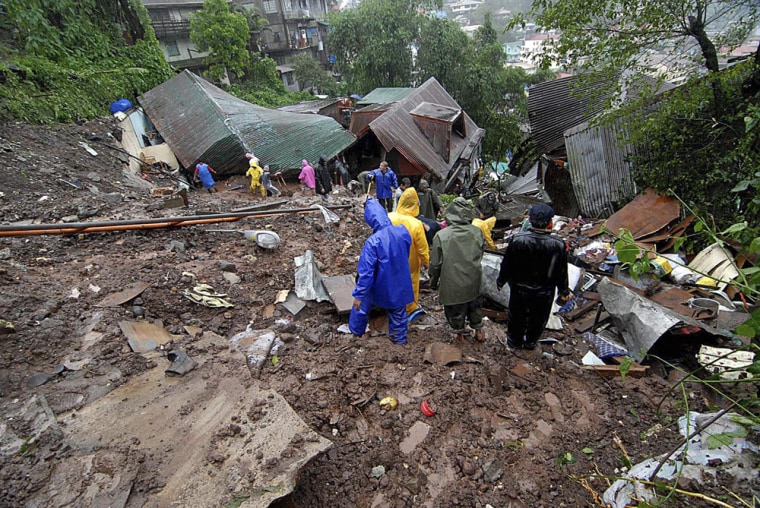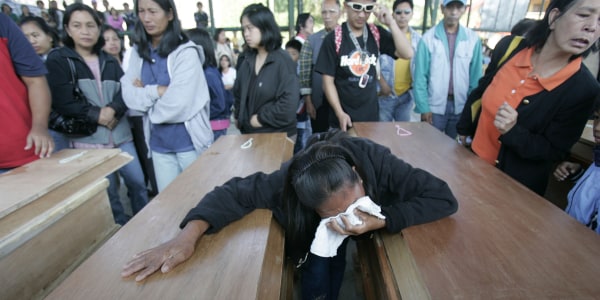Driving rain on the heels of back-to-back storms triggered dozens of landslides across the northern Philippines on Friday, burying more than 160 people, washing away villages and leaving almost an entire province under water.
The latest deluge brought the death toll to nearly 500 from the Philippines' worst flooding in 40 years after storms started pounding the country's north on Sept. 26.
More than 160 people were killed in landslides in Benguet and Mountain Province along the Cordillera mountain range, about 125 miles north of Manila, officials said. Residents were jolted awake by the rumbling sound of mudslides and floodwaters tearing apart the saturated soil and washing away homes.
Rescuers wading through sloshy mud from nearby Bagiuo city retrieved at least 162 bodies, bringing the total deaths in the two provinces since Typhoon Parma struck on Saturday to 174, said regional disaster relief officer Rex Manuel. At least 48 others were missing and 120 were pulled out alive.
Nearly the entire village of Kibungan in Benguet was buried under tons of mud and debris, Manuel said. Some 45 bodies were recovered so far. Rescuers used pulleys and cables to transport the dead they retrieved from piles of rubble.
Slideshow 71 photos
Philippines hit by more slides, flooding
TV footage showed the bodies arriving in black bags in a hall in Baguio, where relatives wept after recognizing their loved ones.
"There was a sudden rumble above us, and then the houses at the bottom were gone, including them," said Melody Coronel, pointing to the relatives she found among the dead.
In Mountain Province, 15 bodies were retrieved while 20 people were missing from a village in Tadian township, Manuel said.
Landslides blocked the roads to the mountain city of Baguio, where 48 people died, in the heart of the Cordillera region. The only way to reach the isolated, mountain communities was by foot, and military helicopters could not fly yet because of fog and rain, said Lt. Col. Ernesto Torres of the government's disaster-relief agency.
"We are focused on rescue at this time," he said. "It is raining nonstop in the Cordilleras."
About 100 landslides have struck the region since the weekend.
In Benguet province's Buyagan village, only three out of about 100 houses remained visible after Thursday night's landslide buried most structures there. Some 50 residents were saved and seven bodies recovered, Manuel said.
Thousands rescued from rooftops
As the mountain region struggled with the rescue operation, farther to the south, in Pangasinan province, pounding rains prompted authorities to discharge excess water from swollen dams. The deluge caused the Agno River and surrounding dikes to burst their banks, inundating 30 out of 48 towns, a scene of mayhem that sent residents onto rooftops, scrambling for safety.

Better weather allowed the Philippine coast guard and U.S. Navy helicopters to pluck people marooned on the roofs and treetops.
In Rosales, also in Pangasinan province, the biggest mall in town was flooded by neck-deep waters that sent appliances floating and smashing through glass panels. Some residents were seen carrying some of the goods away.
About 1,000 people remained stranded in the mall as night fell Friday. Others whose houses were flooded retreated to higher floors or were staying with relatives and neighbors.
Forecasters said Parma, which was downgraded to a tropical depression, was still lingering off the northeastern coast. It hit land more than a week ago, the second major storm to drench the country in two weeks. Tropical Storm Ketsana, which struck Sept. 26, left 337 people dead, most of them in and around Manila.
The government's disaster relief agency said it had asked the U.S. Embassy to redeploy hundreds of American troops from the massive cleanup in Manila to the flood-hit areas in the north. The U.S. government doubled its aid pledges to $4.3 million.
Two U.S. Navy ships were positioning in the Lingayen Gulf in Pangasinan to provide helicopters and rubber boats for the rescue mission, said U.S. Marine Capt. Jorge Escatell.
Six U.S. Navy CH-46 transport helicopters were on standby at Clark Air Base and two more were at a Philippine military camp in nearby Tarlac province, Torres said.
More on: Philippines

